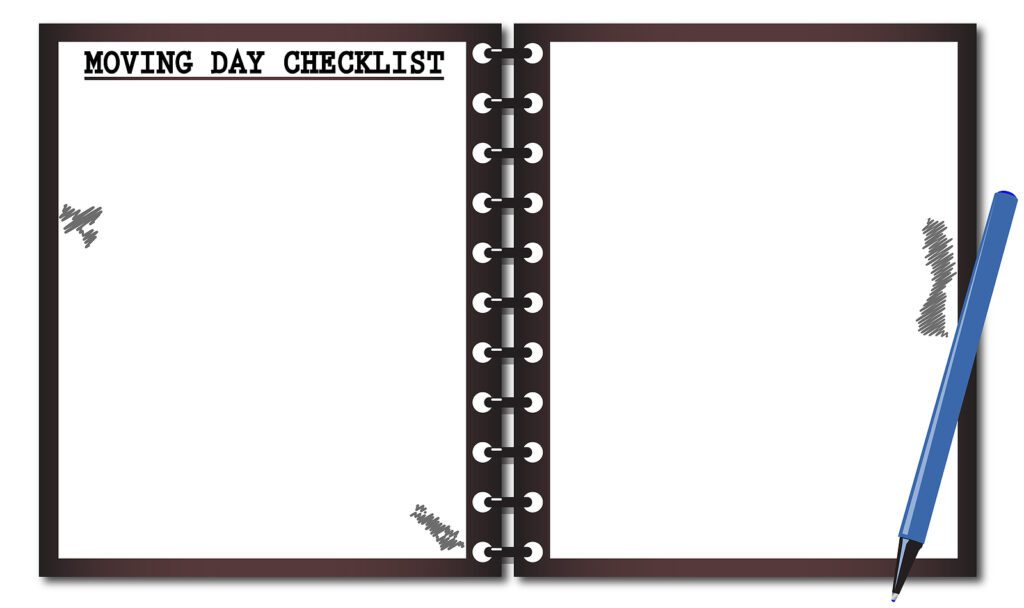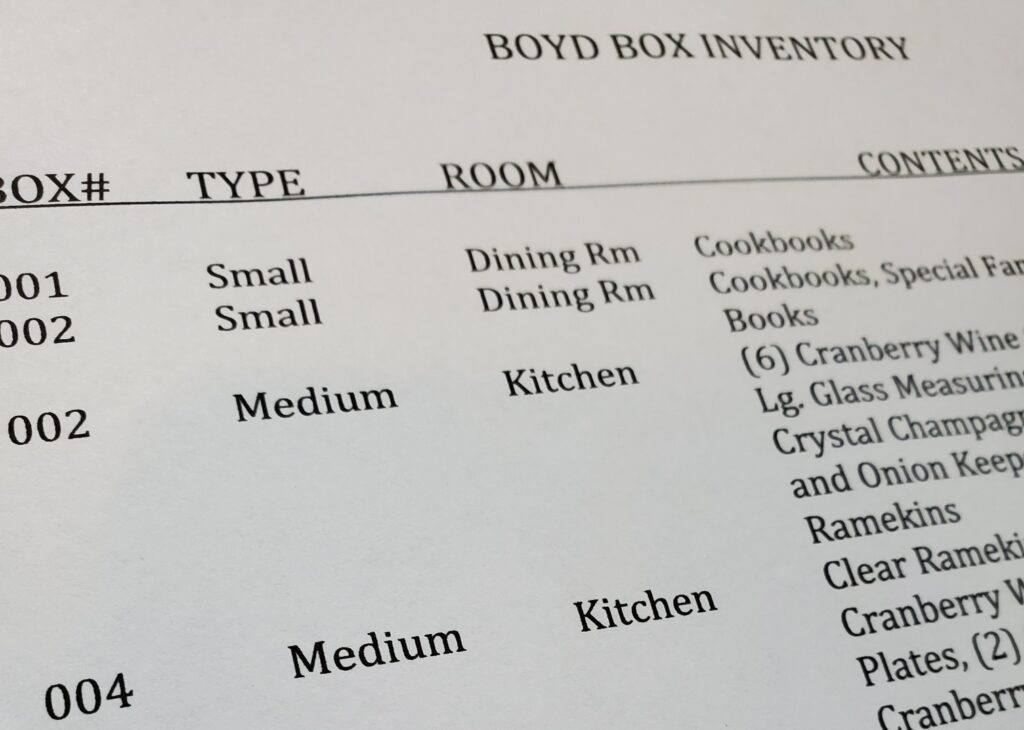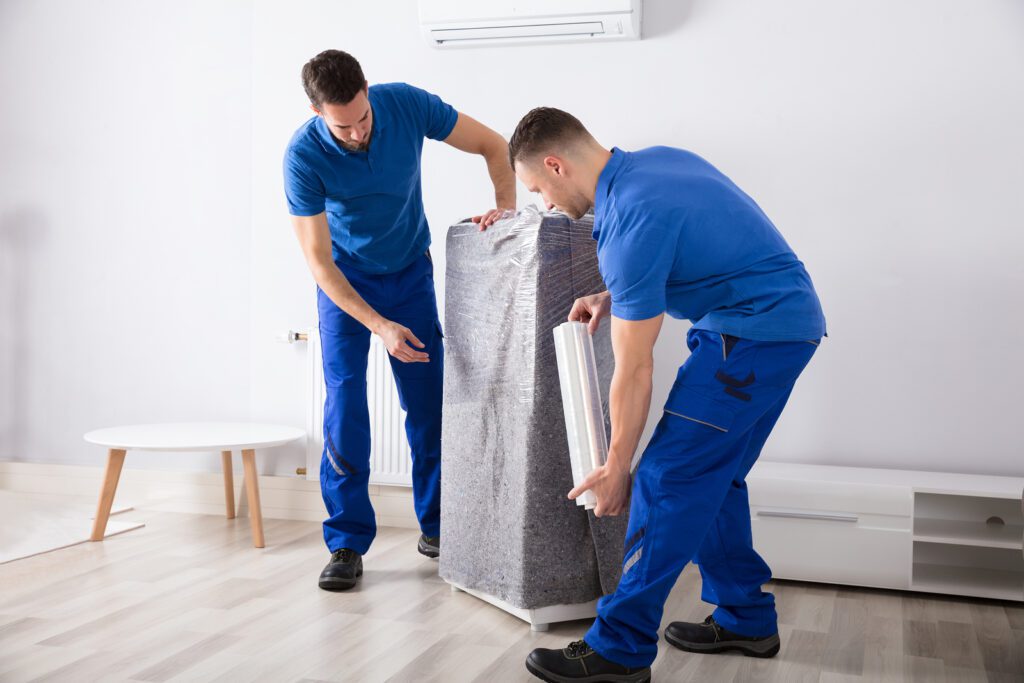8 Smart Strategies for Downsizing Seniors for a Stress-Free Move Day

Moving at any age is challenging, but it can be an outright nightmare for downsizing seniors who are already overwhelmed by making tough decisions while purging a lifetime of precious possessions.
But you can take control and feel more confident using these eight time-tested, game-changing senior downsizing specialist strategies that can make your move day as stress-free as possible.

Smart Strategies #1 – Create a Plan That Includes a Move Day Checklist
If you aren’t hiring a professional downsizing specialist to help you, start by creating a written plan that takes you through every step of your downsizing transition process. For this article’s purposes, let’s drill down on one of the days that can create the most stress, your move day. It’s helpful to create a checklist that takes the guesswork out of that hectic, fast-paced day.
Think through each step and be conservative with the timing to accomplish each task. For example, start with how early you need to be up and ready for the movers when they arrive to start loading, which is typically 8 or 9 am. Don’t forget to include drive time, breaks for a quick meal, and setting up essentials at your new home. Creating a checklist of each step keeps everything organized, helps ensure you don’t forget important tasks, and provides confidence you’ll be ready for the day’s activities.
Take the time to make this plan months ahead of your anticipated move, as the final days and weeks before a move can become hectic, making it more difficult to remember smaller details.

Smart Strategies #2 – Pack a “First Day Essentials” Box
One of those “smaller details” that gets overlooked is the “First Day Essentials” box. You want to designate a single box or tote to place essentials that you’ll need in the first 24 hours at your new home, such as: Cell phone, appointment calendar, eye or reading glasses, phone chargers, check books, TV cables, and remote for quick setup, paper towels, toilet paper, snacks, water, supplies for your pet, etc.
Add any other items of comfort you’ll need immediate access to while the movers are unloading and for your first evening at home.
Don’t forget to include coolers in your plan to transport refrigerated food from your old home to the new one. Movers typically will not move these, or other items like liquor or wine. So it’s important to use up food stuffs as much as possible before move day to reduce the amount of items you’ll need to transport on move day. Liquor or wine should be packed in fully closed wine cases or boxes and “hand-carried” to your home in your car.

Medications should also always stay under your control during the move in your Essentials Box. Movers don’t want the liability of transporting them, and you don’t want to be without crucial meds while getting settled.
A small moving box or medium-sized plastic tub will give you plenty of room for these items. Never give this box to the movers to transport; instead, plan to carry it yourself in your car to ensure immediate access. Just make sure it’s not too heavy or difficult to carry to or from your car.
Smart Strategies #3 – Label Your Boxes The Right Way
There’s nothing worse on move day than being surrounded by a couple hundred moving boxes at your new home and urgently needing something, like eating utensils or toilet paper, then trying to remember which box you packed it in.
For this reason, labeling each box is essential if you want to lower your stress during the delivery/unpacking phase. Use large, easy-to-see labels and place them in the same location on every box for consistency. You don’t need to list the contents on the box. Instead, use Smart Strategy #4 below to create a separate inventory.
It’s always a good idea, especially for long-distance moves where your items may be loaded with other deliveries, to include your last name along with the box number and room that it will be delivered to on the label.
Here’s why including the room helps movers expedite delivery more quickly. Many people make the mistake of listing the room the box was packed in. But in a downsizing move, these items may be going to a different room or storage space in the new home.
Clear, consistent labeling allows the movers to place boxes directly in the correct rooms, which saves time and reduces confusion.

Smart Strategies #4 – Use a Centralized Inventory List
There are several digital inventory software applications available today to keep track of your belongings during a move, but many seniors feel that adding the learning curve of a new software isn’t worth the effort or energy.
Instead, you can go old school and use a lined yellow tablet with the following categories at the top of each page: Box number, type or size of box (small, medium, large, wardrobe, etc.), room (that it’s going to), and a brief contents description.
It’s best to avoid using general descriptions like “Bathroom Items”. Give enough of a description that you’ll be able to identify an item by type, like “makeup”, “toiletries”, or “towels”.
Yes, it takes a little extra time up front during the packing phase. You’ll be glad you took the time, especially when you’re hunting for your underwear or the bedside clock that first night.

Smart Strategies #5 – Use Experienced Professional Movers
Yes, I know movers are expensive, but then what price do you put on your sanity? A low budget, untrained mover is one of the single biggest causes of move day stress there is. I’ve watched too many clients in my career realize the mistake when they find their precious furniture damaged, or worse, are missing irreplaceable items that never made it to the destination, just because they wanted to save a few hundred dollars.
Let’s face it, moving is a hazardous business. Damage can occur even with the best of crews, but moving with an untrained or inexperienced moving company, or worse, trying to move yourself, only ups the odds for problems on move day.
If possible, hire a professional moving company that specializes in moving seniors. Do your due diligence and check for consistent ratings on social media or get recommendations from friends or neighbors who have had a positive experience. A qualified mover can ease the physical demands and reduce strain, especially for seniors who may need extra help with heavy lifting and coordination.
To learn more about how to hire a qualified mover, check out my online video mini-class on the topic available at The Downsizing Institute by clicking here.

Smart Strategies #6 – Prioritize Setting Up Essentials First
Upon arrival, prioritize setting up essential items in the areas you’ll use most in the first 24 hours. This includes things like your bed, a seating area with a connected TV, basic bathroom necessities, and basic kitchen supplies. This allows you to rest and feel comfortable, even if the rest of the unpacking takes several days.
Mark a few priority boxes on your inventory list, then set them aside and ask the movers to load them last—this way, they’ll be the first boxes off the truck and into your new home.
It takes time to offload furniture and several hundred boxes. Having the “last on, first off” strategy gives you boxes to unpack of critical items while the movers are working on bringing in the rest of the furnishings and non-essential boxes.

Smart Strategies #7 – Protect Your Pet
Moving isn’t just hard on you, it’s hard on your pet. The hustle and bustle of movers coming and going can make animals anxious or scared. I always recommend that my clients give their furry family member a spa day away from the hectic activities. Have them stay with a friend or family member, or drop them at a pet spa for a day of pampering.
Moving day can be dangerous for pets—they may slip out the door or get underfoot, even when movers are being as careful as possible. If you think moving to a new and unfamiliar location is hard on you, imagine what it does to a dog or cat. So be kind, save yourself the worry, and keep them safe off premises.
Smart Strategies #8 – Have a Move Day Support Person
That old saying “It takes a village” is especially true on move day. Having a friend, family member, or even better, a professional senior downsizing specialist who can act as a “moving day coordinator” is an invaluable strategy on move day.
This person can help give direction to, or coordinate with movers, help unpack, remove box debris or manage unexpected issues, allowing you to focus on the transition without stress. No family or friends available? Just do a “Google” search for a Senior Downsizing Specialist or Professional Home Organizer in your area to find a professional who can help.
Final Thoughts
Creating a plan that incorporates these tips and strategies can go a long way in helping you feel less overwhelmed. Move day always seems to come faster than expected, but with the right plan in place, you give yourself the grace to think more clearly, while lowering your stress and giving you more time to enjoy and settle into your new home.
Deborah

P.S. – Looking for more ways to reduce your stress on move day? Check out the quick and easy online video instructional mini-classes on a variety of downsizing topics in my Downsizing Made Simpler educational series available here.
